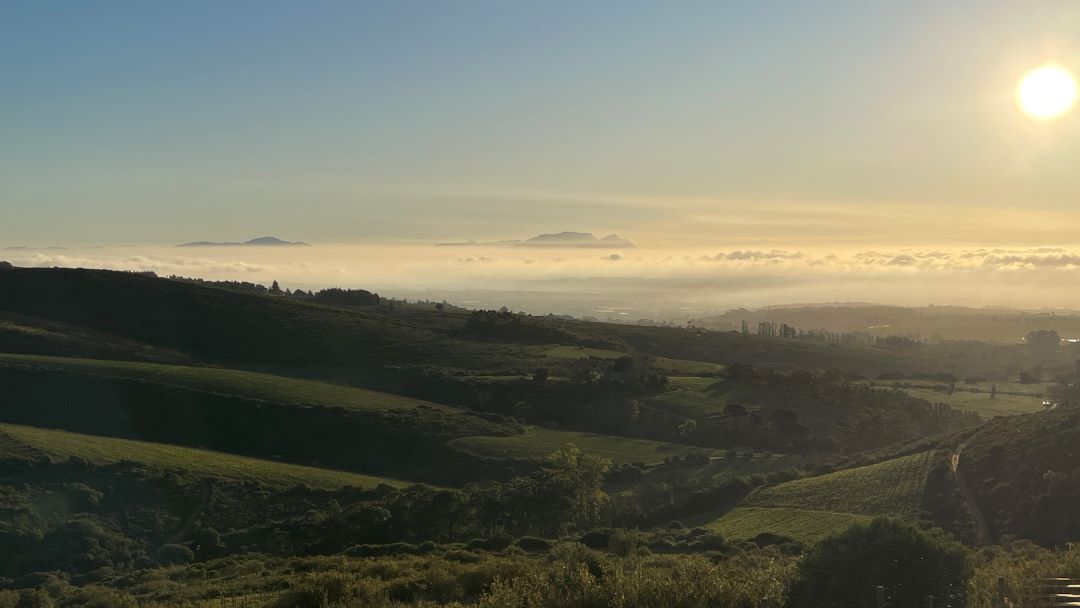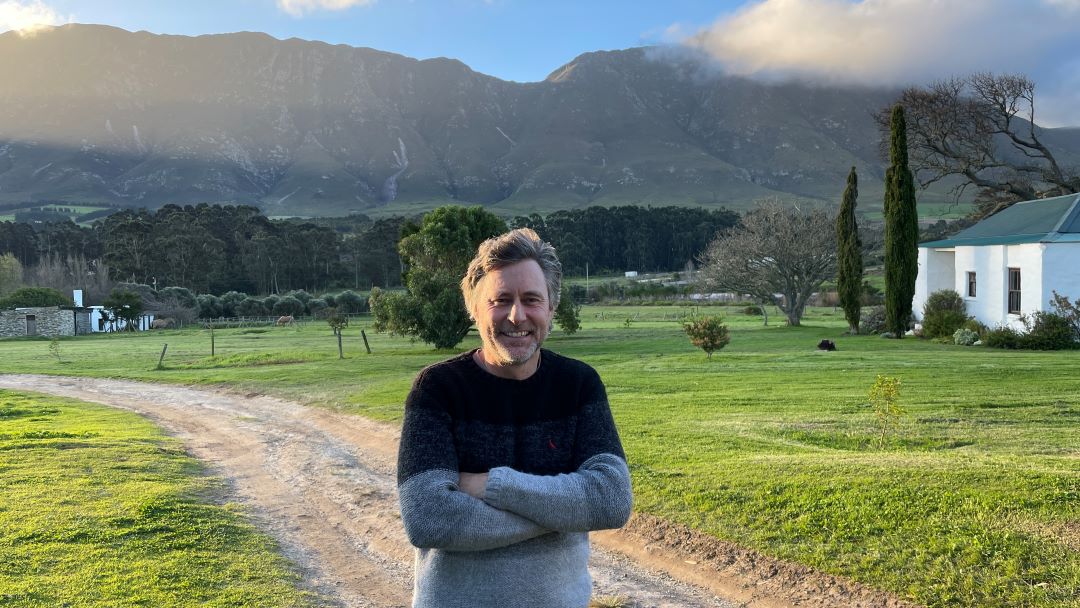Browse using the new Vinous website now. Launch →
Printed by, and for the sole use of . All rights reserved © 2015 Vinous Media
Steenwold! South Africa: Ten Years On
BY NEAL MARTIN | JULY 30, 2025
The South African wine revolution has been something to behold. Spearheaded by a handful of Swartland winemakers, the Cape’s wine landscape has improved beyond wildest expectations at such a clip that it can be difficult to keep up. During my last two visits to the Cape, I noticed a shifting mindset amongst forward-thinking winemakers insofar that the frenetic rate of change needed to slow down. Elite growers had to change tack by consolidating portfolios and cementing their reputations. The perception of South Africa was once of young winemakers pruning vines during the week and surfing the waves on the weekend, which is close to the truth. This image punctured the stigma towards the country and turned South Africa into the unlikeliest of hipsters. But everyone grows up. It was time for a bit more maturity in order to chart the course for the next 20 years.
An integral part of that maturation is for producers to measure their accomplishments by the same yardstick as those of classic regions: longevity. The Cape rightly touts its mosaic of ancient soils, its willingness to embrace organic, hands-on viticulture and its low-intervention winemaking, all of which have endeared the region’s wines to a burgeoning set of wine lovers. The pertinent question is whether these wines deliver secondary aromas and flavours to reach a level of complexity that, lest we forget, only time can imbue.
Now is the perfect juncture in South Africa’s timeline to answer that question. It has been ten years since the game-changing “New Wave of South Africa” tasting introduced the likes of Chris Alheit, Donovan Rall, Samantha O’Keefe and John Seccombe et al. to a wider public, expanding the aforementioned revolution beyond Swartland and across the Cape. It turned a revolution into a movement.
Looking
across the fog towards Table Mountain. I took this picture during my visit to
the Cape in 2023.
The 2015 vintage is viewed as one of the greatest in recent times, a textbook growing season that saw a dry but windy summer without heat spikes, coupled with plentiful water reserves thanks to a rainy post-harvest April and May. This led to a harvest that began around a fortnight earlier than usual. The resulting wines did a great deal to cement South Africa’s reputation and put it on the world stage.
So, how are those same wines faring in 2025?
A few months ago, I was given advance notice of a blind tasting organised along the same rubric as the Southwold Bordeaux tasting. Kudos to Victoria Mason and Mark Dearing, of The Wine Society and Justerini & Brooks respectively, who took the initiative to assemble 78 whites and reds from this acclaimed vintage, serving them organised per region or blend to a small group of professionals. This inaugural event, since dubbed “Steenwold,” took place in the cellars of Berry Brothers & Rudd, proof that the cooperation commonplace in the Cape extends towards competitors here in the U.K. Steenwold is intended to become an annual tasting that will expand the number of wines in the future, since many well-known winemakers were yet to establish their own projects ten years ago.
Preparing
for the first flight. The only mishap was that nobody took photos of the
bottles, so this is the only evidence that the tasting took place!
The inaugural Steenwold is a significant event for South African wine with the potential to galvanise appreciation and change opinion amongst the few remaining skeptics of the country’s credentials. It could serve as proof that these wines should not be underestimated and deserve their plaudits. Of course, in a blind tasting, it can go either way. There is risk. There is always the chance that the wines had declined in bottle. Furthermore, in blind tastings there are inevitably revered wines garlanded with praise on release that fail to pass muster on the day or that were initially misread. Some of the most lauded 2015s are not stylistically obvious. Their virtues can be textural instead of conspicuous or fruit-driven. These are nuanced wines prone to evolve in the glass, sometimes in unexpected ways, qualities that have led many to fall head over heels for the Cape. Thus, I was mindful of this leading up to the tasting.
Here are my conclusions from the inaugural “Steenwold” tasting:
- The overall quality of the 2015s exceeded expectations. If the aim of this event was to prove that the best South African wines can not only survive in bottle but also evolve to manifest secondary aromas and flavours, then job done.
- In particular, I was hugely impressed by the whites, predominantly Chardonnay and Chenin Blanc. At their peak, these are startling wines that are only embarking upon their opening chapters. To put that into context, I undertook a blind tasting of 2021 white Burgundy in an almost identical format the following week. Some of the Steenwold flights were equal to the Côte de Beaune Premier Crus or surpassed them, plus of course…
- …most of these wines cost a
fraction of Burgundy. In terms of quality-to-price ratio, I cannot think of
another wine-producing country that comes close. Yes, you can quote me
on that.
Swartland led the way in 2015. Highlights of the tasting clustered in this region, which was not unexpected. Whilst there has been no drop-off in quality within the Swartland, regions such as Hemel-en-Aarde, Bot River and, more recently, Stellenbosch have all caught up. This is partly due to the younger average vine age in 2015, when many vineyards in those regions had only recently been planted. If we repeat this tasting in a decade’s time, I expect a more even geographic distribution of quality. - Stars of the show? Step forward, Chris and Andrea Mullineux. Their Syrah and Syrah Schist are simply magnificent. Likewise, Callie Louw’s 2015 Porseleinberg is world-class, and Richard Kershaw’s cartographically themed single-site Pinots won much applause. I adored the 2015 Ava Marie Chardonnay from Craig Wessels at Restless River and, again, Mullineux’s Old Vine Chenin Blanc. Perhaps the surprise package was the Swartland Syrah from Solms-Delta. There was also greatness to be found in David & Nadia’s wines, Momento’s Chenin Blanc, DeMorgenzon’s Chenin Reserve and Crystallum’s Clay Shales Chardonnay.
- Naturally, some samples did not show as well as one might have expected, but that happens to even the most illustrious names in Bordeaux and Burgundy. I just didn’t get Eben Sadie’s Columella or Palladius, though I think the latter might be a hangover from when Sadie was extracting a bit more than he does nowadays. My score did not prevent the Palladius from receiving the highest average group score, but I have a question about whether it was a representative bottle. Likewise, I could not get a read on Chris Alheit’s lauded 2015 Cartology, even if the 2015 La Colline shone brightly. That’s just the way the cookie crumbles under blind conditions.
- There was some consternation about the performance of closures. The organisers reported a failure rate of around 30%, more for the reds than the whites, a figure that seems higher than what I encountered on my table. Nevertheless, this does undermine confidence in cellaring these wines. I believe that there is much more rigor in checking the quality of corks in 2025 than there was in 2015. I still advocate wider use of alternative closures, especially DIAM.
Hannes Storm submitted multiple samples from this Hemel-en-Aarde estate.
This was a great way to open Steenwold’s account. Moving forward, I would expect to see more representation from other Wines of Origin to enable a more accurate comparison between various regions of the Cape. At the moment, the sample size is too small. To repeat my opening paragraph, South Africa’s dynamism means that the landscape is very different now from what it was in 2015 when the country’s winemakers were revving their engines. These winemakers learned quickly through experience, bolstered by the strong bonds within the wine community. This tasting proved that they had a solid base upon which to evolve and move forward.
Above all, Steenwold answered the question once and for all…
Can the best South African wines repay cellaring?
Definitely.
© 2025, Vinous. No portion of this article may be copied, shared or redistributed without prior consent from Vinous. Doing so is not only a violation of our copyright but also threatens the survival of independent wine criticism.
You Might Also Enjoy
South Africa: Where Are We Now?, Neal Martin, September 2024
White-on-White: Porseleinberg 2010-2020, Neal Martin, November 2023
The A to Z of South Africa, Neal Martin, November 2023
Growing Up ‘n Getting Wiser: South Africa in 2022, Neal Martin, September 2022
Back In Black: Kanonkop Black Label Pinotage 2006-2019, Neal Martin, August 2022
Show all the wines (sorted by score)
- Alheit Vineyards
- Badenhorst Family Wines
- Beaumont Family Wines
- Boekenhoutskloof
- Craven Wines
- Crystallum
- David & Nadia
- DeMorgenzon
- Gabriëlskloof
- Hamilton Russell Vineyards
- Keermont Vineyards
- Leeu Passant
- Lismore Estate Vineyards
- Miles Mossop
- Momento
- Mullineux
- Mullineux & Leeu Family Wines
- Newton Johnson Family Vineyards
- Patatsfontein
- Porseleinberg
- Rall Wines
- Restless River
- Reyneke
- Richard Kershaw Wines
- Savage Wines
- Solms-Delta
- Storm Wines (South Africa)
- The Fledge & Co.
- The Foundary
- The Liberator
- The Sadie Family Wines
- Thorne & Daughters



